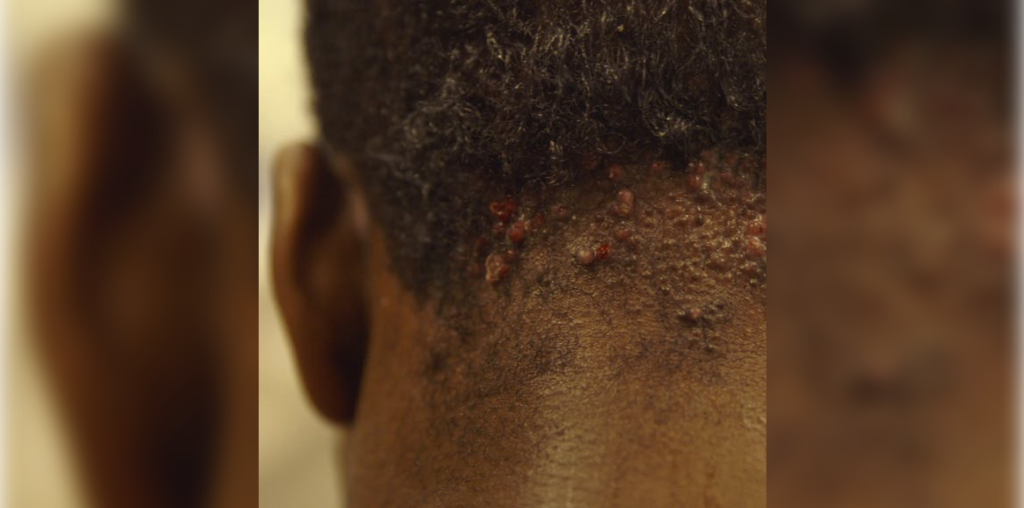
A 24-year-old presents with three years of recurrent, tender and often spontaneously draining bumps on the scalp. They have multiple red-purple and flesh-colored perifollicular papules and firm nodules with serosanguinous drainage along the posterior hairline. Several are tender on palpation and there is a foul odor.
This folliculitis with hypertrophic scarring papules, nodules, and plaques along the occipital scalp and posterior neck is known as acne keloidalis nuchae. It is thought to occur secondary to recurrent irritation and inflammation from coarse, tightly curled hair and can result in permanent scarring alopecia, as well as coalescing nodules into infiltrated plaques and tumoral masses.
Often, by the time the patient seeks care, they will have developed scarring. Scarring often presents as keloidal papules, plaques, or nodules at the site of previous occurrences.
Identifying the condition is generally clear from physical examination and palpation. In addition to a patient’s medical history, including trauma, infection, and medication, information on their hair cutting routine will also be relevant.
Further Reading
- Acne Keloidalis Nuchae
- A Retrospective Cohort Study and Clinical Classification System of Acne Keloidalis Nuchae
- Figure 1 Medical Case
References
- Umar S, Lee DJ, Lullo JJ. A Retrospective Cohort Study and Clinical Classification System of Acne Keloidalis Nuchae. J Clin Aesthet Dermatol. 2021 Apr;14(4):E61-E67. Epub 2021 Apr 1. PMID: 34055191; PMCID: PMC8142833.
- Al Aboud DM, Badri T. Acne keloidalis nuchae. In: StatPearls [Internet]. Treasure Island (FL): StatPearls Publishing; 2021 [cited 2021 Nov 26]. Available from: https://www.ncbi.nlm.nih.gov/books/NBK459135/
Want more clinical cases?
Join Figure 1 for free and start securely collaborating with other verified healthcare professionals on more than 100,000 real-world medical cases just like this one.